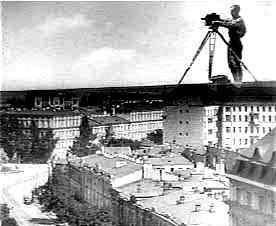
In the first week of class this semester we were asked, “What does film mean to you?” I remember many of us mentioning that our view of cinema as an escape from reality; a chance for us leave any troubles and frustrations we face and be transported into a new realm for ninety minutes. As cliché and contrived as this sounds, I think this is certainly true.
Ultimately, I am of the opinion that we watch films for the stories. We like the idea of being able to adopt a voyeuristic stance in which we can live the lives of others without being faced with the social and moral consequences of our actions. The story plays a vital part in the emotional connection we develop with a film and its characters and thus sutures us into the fabric of the film. In comparison to the passive nature of the story of a film, discourse represents the way in which film communicates to the viewer, the latent aspects of filmmaking and the way they manipulate the way in which the story is told and interpreted.
In Christian Metz’s article titled Story/Discourse: Notes on Two Kinds of Voyeurism he addresses the contrast between story and discourse in film. He mentions the idea that part of the purpose of discourse is to hide “all traces of enunciation” and “masquerade as story”. In the majority of cases in film, this is true. In Hollywood, we don’t often see explicit decisions made by the director to reveal discourse, as this could easily reduce the reality of a scene and disengage the viewer. This idea is mentioned in author Neil Gabler’s discussion titled Celebrating the Conversation: Public Discourse. Moderator Judith Rodin states “there is little public discourse in American film” because “rational discourse isn’t exactly going to provide nail-biting suspense.
Still, many films have been made that aren’t afraid to flaunt discourse and the ideological side of film. Man with the Movie Camera by Dziga Vertov is a great example of this. This experimental film rids itself of story and actively provides with the viewer of a perspective in which they are behind the filmmaker as the film is being shot, rather watching the film through the filmmaker’s camera. This effectively rids the audience of the camera’s perspective and forces the audience to assess and appreciate the ideological angle of film. Rather than connecting the characters in a story through shot-reverse shots, the filmmaker and his subjects are connected through shot-reverse shots of the subjects and the man with the movie camera. This allows the filmmakers active role in the construction of the shot to surface. A great example of this is the scene in which we see a close-up shot of a woman riding in a horse-driven cart. Rather than show a shot of another character in the film or establish an idea of where the cart is going, as it would for a concise story, the film shows us a shot of the cameraman perched on the cart filming the lady.
Man with the Movie Camera allows thus forces us to consider these latent aspects of film, and makes us realize the way in which a filmmakers shot selection and decision can manipulate us as an audience. It makes us realize Metz's message in that discourse is brought to the fore. It was a real paradigm shift in that I as a very consumer-centric Hollywood audience member failed to realize the way in which discourse is disguised to move and affect me. Having said that, I found Man with a Movie Camera incredibly difficult to watch. This could be attributed to the fact that the lack of tangible story meant that it was difficult for the audience to be woven into the fabric of the film, and like Rodin says, the rationality and understanding behind the film didn’t allow for suspense or engaging action.